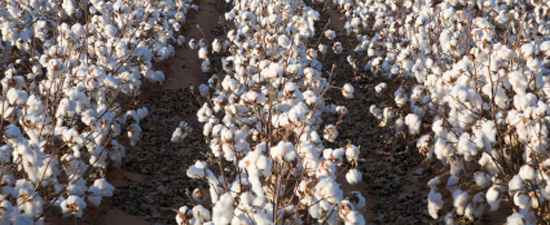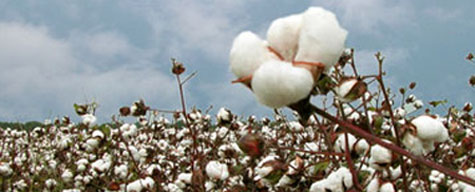
Pima cotton is a type of cotton that is mostly grown in the United States. Pima is a generic name given to extra long staple cotton. This extra-long staple cotton is a premium cotton meant that often competes with another extra-long staple cotton, Egyptian cotton.
The history of Pima cotton in the United States can be traced back to the 1700s. It was then that Sea Islands cotton was crossbred with Egyptian cotton to produce the first generation of the modern day extra-long staple cottons that we now have in the United States. In the early 1900’s, the government sponsored the USDA Pima Improvement Project.
This project made significant advances in Pima development, helping produce the Pima cottons we now see today. Originally Pima cotton was called American-Egyptian. U.S. growers decided to change the common name of the extra-long staple cotton to honor the Pima Indians.
Pima cotton is extra-long staple cotton. In order to be deemed extra-long staple, cotton must measure one and three-eights of an inch or longer. Pima cotton is a variety of upland cotton. Upland cotton, also known as Mexican cotton, is the most commonly grown cotton in the United States. Pima is stronger and longer than upland cotton, making it premium cotton.
Grown in the Southwestern United States, Pima cotton needs a hot, dry climate with plenty of sun to prosper. Arizona, California, New Mexico and Texas are the chief Pima producing states due to their inviting climates with long growing seasons. While the growing of Pima cotton is not necessarily more expensive than growing other cottons, the ginning process is more expensive as the Pima must be roller ginned rather than saw ginned as is the traditional method.
Pima cotton accounts for just three percent of all the cotton produced each year in the United States. Pima is used to make fine yarns which will ultimately end up knitted or woven into luxury fabrics. As the United States’ textile mills are more in the business of medium or coarse yarn producers, more than 90 percent of Pima cotton is consumed overseas. South Asia is the location that imports the most U.S. grown Pima cotton. The United States does still use approximately 65,000 pounds of Pima per year.
Products made from Pima cotton are much stronger than products made of upland cotton. Pima cotton’s strength helps to improve any finished product’s durability and give it a longer life. Pima cotton, is extremely fine which allows more fibers to be spun into cloth. The more fibers in a cloth, the higher the thread count. And with a higher thread count comes greater softness.
Not all Egyptian cotton is extra-long staple, unlike Pima cotton. For cotton to earn the name Pima, it must measure be extra-long staple, but the label Egyptian cotton only guarantees that the cotton was made in Egypt. Egypt consumes the majority of cotton it produces, leaving it unable to keep up with worldwide demand. This lack of Egyptian supply helps create an ever-growing demand for Pima cotton.






